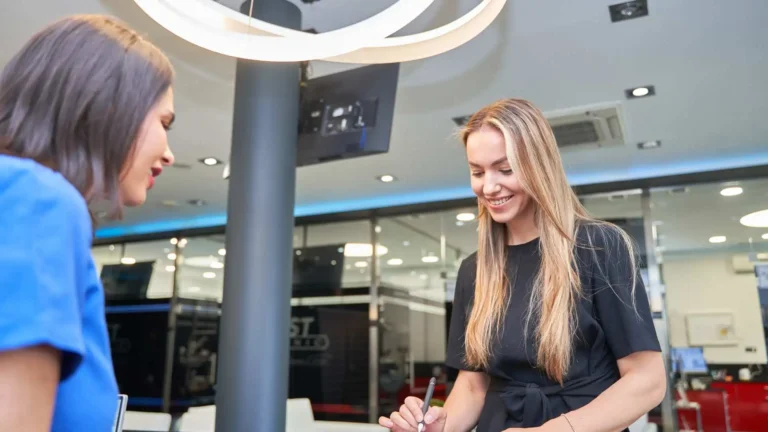Most banks profit when you don’t save, relying on fees, low-interest payouts, and encouraging spending through credit. Traditional savings accounts often offer minimal interest. This is why your bank isn’t helping you save—they focus more on products that benefit them than your financial growth.
To take control, explore high-yield savings accounts, credit unions, or digital banks with better rates and fewer fees. Use budgeting tools and automate your savings to build consistency.
Traditional Banks Profit When You Struggle
Traditional banks charge fees for basic services, including maintenance and ATM usage. When your balance dips, they charge costly overdraft fees, punishing those who can least afford them.
Meanwhile, they offer extremely low APYs (annual percentage yields) on savings, meaning your money grows painfully slowly. Instead of rewarding saving and smart money habits, banks prioritize profits over people. The more you slip up, the more they cash in. It’s a system stacked against your financial success.
Why You’re Not Saving Enough With Your Current Bank
Most traditional banks offer interest rates so low they barely outpace inflation. At the same time, hidden fees, account maintenance charges, and overdraft penalties quietly eat away at your balance. Banks prioritize profit, not your financial progress, and they have little incentive to help you save more.
Interest rates that don’t beat inflation
Most traditional savings accounts offer around 0.01% APY. If you saved $5,000, you’d earn just 50 cents a year. Meanwhile, inflation averages around 3% annually, meaning your money loses about $150 in buying power. That’s a real loss — even though your balance looks the same. Banks keep most of the profits by lending your deposits at much higher rates while giving you the bare minimum.
Hidden fees that drain balances
Monthly maintenance fees, overdraft charges, ATM fees, and minimum balance penalties can add up fast, especially if you’re not paying close attention. These charges often hit hardest when you’re already low on funds, making it even harder to get ahead. Banks rarely highlight these fees upfront because they’re a significant source of revenue. Instead of helping you save, they profit from your missteps.
How Modern Alternatives Can Help You Save Smarter
Modern banking alternatives like high-yield savings accounts, credit unions, and fintech apps are designed to help you save, not drain your wallet. Fintech apps with automation and round-up features simplify saving and investing by making money management effortless.
These apps automatically track user spending and round up purchases to the nearest dollar, saving or investing the spare change. With better interest rates and fewer hidden costs, your money grows faster and works harder for you.
High-yield accounts with no minimums
High-yield savings accounts provide interest rates significantly higher than traditional ones, helping your savings grow faster. With no minimum deposit or balance, they’re accessible to everyone and are ideal for beginners or those building emergency funds. Many online banks and fintech platforms offer these accounts, often with added perks like fee-free access and mobile banking.
Also read: Digital Declutter is Money Saved: How Cleaning Your Apps Can Boost Your Bank Account
Where You Should Be Putting Your Money Instead
Instead of letting your money sit idle in low-interest traditional savings accounts, consider more innovative options that offer growth and flexibility. High-yield savings accounts and certificates of deposit (CDs) provide better returns with minimal risk.
Fintech apps offer automated savings and investing, rounding up purchases to grow your funds passively. For long-term growth, low-cost index funds and retirement accounts like IRAs or 401(k)s are solid choices.
Digital-only banks, credit unions, savings-first platforms
Digital-only banks operate entirely online, with low fees, high-yield savings, and user-friendly mobile apps. Credit unions, though more community-based, often provide better interest rates and personalized service, now paired with improved digital access.
Savings-first platforms like Chime and Qapital are designed to help users build better financial habits through automation, round-ups, and goal tracking. These options prioritize transparency, accessibility, and financial growth.
Diversifying with CDs, HYSAs, or micro-investing
To diversify your savings, consider Ally Bank CDs. These guaranteed returns are great for short-term goals, though funds are locked in (early withdrawals incur penalties). Use SoFi or Discover HYSAs for emergency funds; they offer high interest and liquidity, but rates may fluctuate.
Try Acorns for round-up savings or Stash for themed ETF investing. These micro-investing platforms are beginner-friendly but may charge monthly fees. Combining CDs, HYSAs, and micro-investing balances safety, access, and growth potential.
See Also: How to Increase Your 401(k) Contributions Without Feeling It
Why Your Bank Isn’t Helping You Save: When to Make the Switch
Switching to digital-only banks, credit unions, or savings-first platforms makes sense when you seek higher returns, lower fees, or more automation in managing your finances. Consider switching when frustrated with traditional banks’ high fees or limited services.
Tools like HYSAs, CDs, or micro-investing apps offer better opportunities to build savings or invest with minimal effort. It’s also time to switch for more flexibility or mobile convenience. Digital banks provide access anytime, anywhere.
If your bank hasn’t updated their savings APY in a year
If your bank hasn’t updated their savings APY in a year, it’s a clear sign to consider switching. Savings rates can fluctuate based on market conditions, and banks that don’t adjust their APY may be offering you far less than what’s available elsewhere.
Look for digital-only banks or credit unions that regularly update rates to stay competitive and offer higher returns. High-yield savings accounts (HYSAs) or online banks like Ally or SoFi often provide better interest rates with no fees.
If you’re paying monthly maintenance or overdraft fees
If you’re paying monthly maintenance or overdraft fees, it’s time to rethink your banking setup. Traditional banks often charge these fees unnecessarily, draining your hard-earned money. Many digital-only banks and credit unions offer fee-free checking and savings accounts without minimum balance requirements.
Platforms like Chime or SoFi eliminate overdraft fees and even provide early direct deposit and budgeting tools. Here is a checklist to know when to move on.
1. Still paying monthly maintenance or overdraft fees
2. Earning less than 1% APY on savings
3. No updates to APY in over a year
4. Outdated mobile app experience
5. Hidden fees or strict minimum balance rules
6. No automation tools for saving or investing
7. Poor customer service or support access
Final Thoughts – You Deserve a Bank That Works for You
Your money should be working as hard as you do. If your current bank charges fees, offer low returns or lacks modern tools, it’s time for a change. Today’s digital banks, credit unions, and savings-first platforms offer more innovative, more rewarding options.
Beem offers a more innovative way to save with tools that track spending, identify hidden subscriptions, and automate savings. Their high-yield savings account lets your money grow faster—without traditional banks’ typical fees and limitations.
Don’t settle for outdated systems. Take control of your finances by choosing partners that prioritize your goals. Whether you’re earning more on your savings or automating your financial growth, you have the power to build a better future.















































